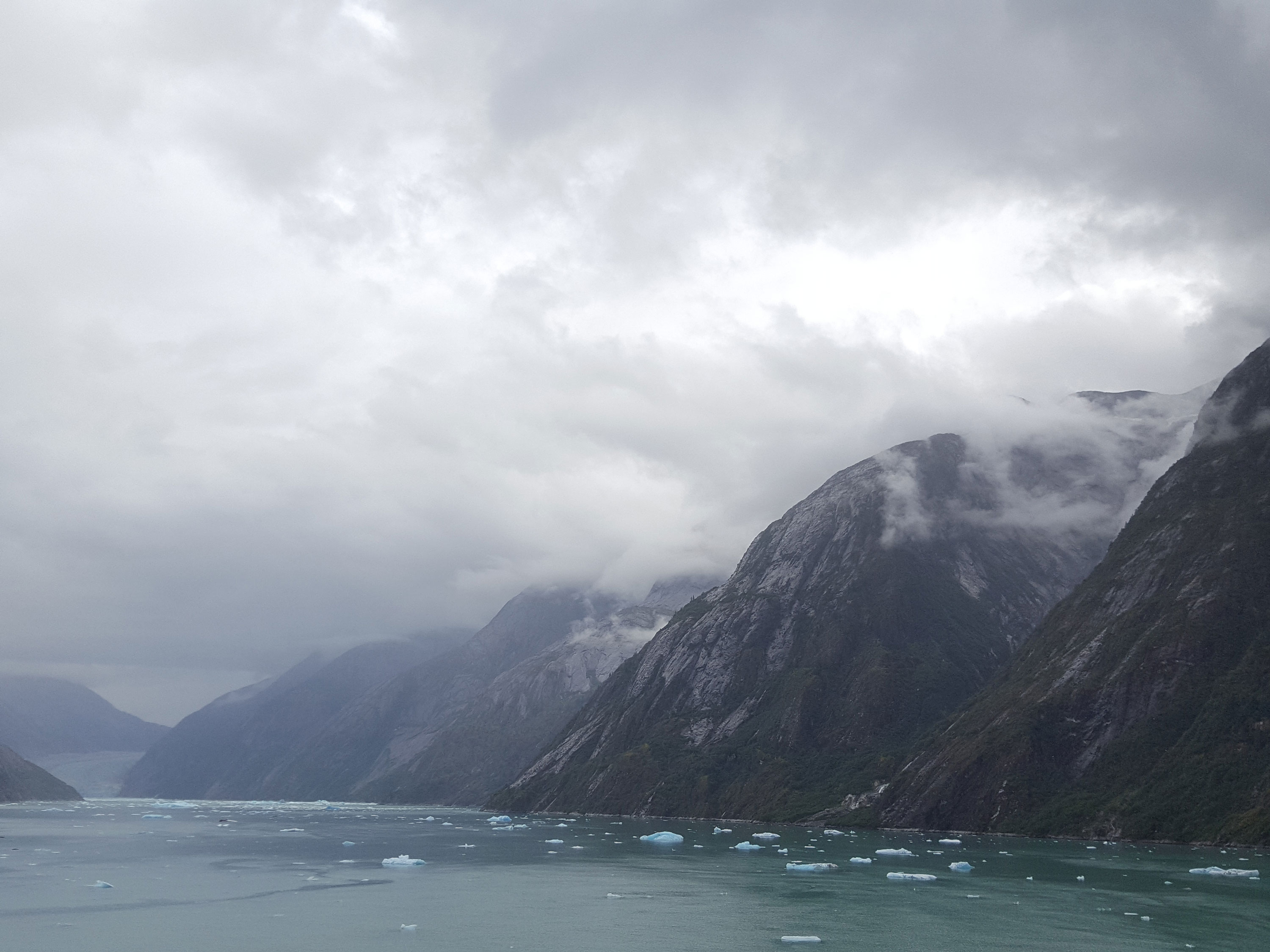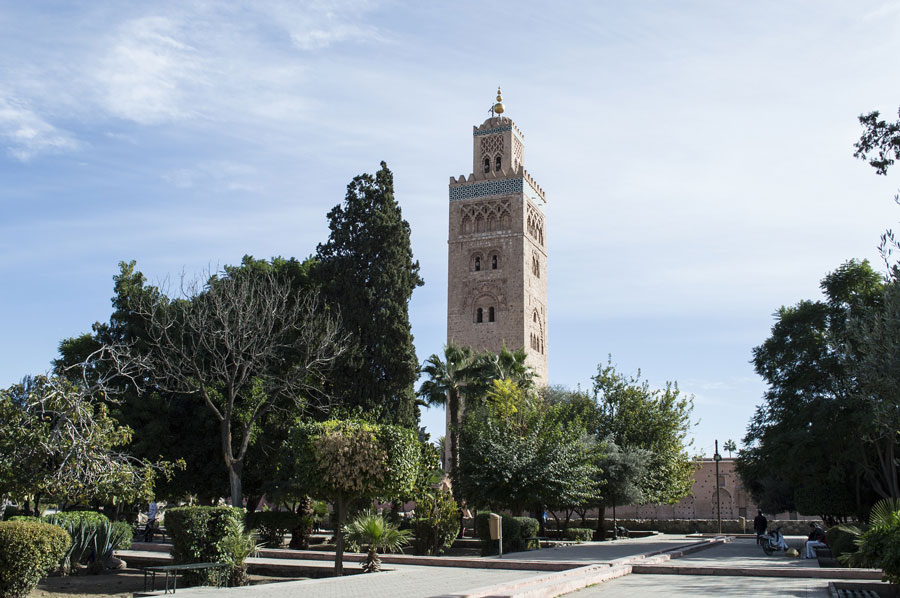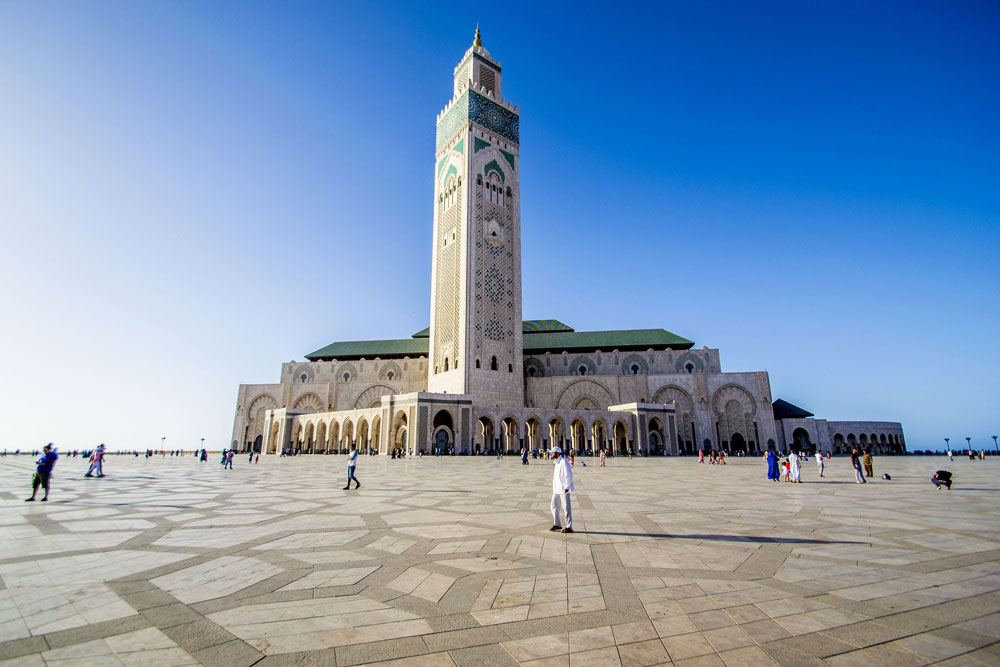Aït Benhaddou is a place I had hoped to see the minute we booked our flight. There is something about it, a feeling of adventure, or perhaps another time. A place where caravans crossed the great Sahara bound for trade along the Silk Road. I imagined epic journeys under the hot desert sun, and conflict with raiders charging against its heavily fortified walls.
It wasn’t an easy journey to get there, not quite like the caravans that came before us, but a long-winding, four-hour bus ride from Marrakech that took us through the stunning Atlas mountains. It was unlike any landscape I had seen before, as the deep red soil mixed beautifully with the dark green trees that sprinkled its contours.



We were greeted along the way by local Berbers, an indigenous group that have lived in the hills of Morocco and northeast Africa for centuries. They have become accustomed to selling their goods along the roadside, to eager tourists hoping for a souvenir to document their travels.

As we made our way, the mountains slowly turned into desert and the humid air we had grown accustomed to quickly became dry and arid. We stopped shortly before the end of journey for a camel ride, a first for us but an experience that was completely surreal. The camels sat quietly, perched in a closed circle, and after an awkward lift up we were escorted through the desert guided by a young local draped in traditional wear but completed with an iPod to pass his time.

We arrived first at a lookout about 500 metres from its impressive gates. Not immediately visible from where we stopped on the road, but a quick sprint past the peddlers and snake charmers had me pressed up against the edge of the gorge where it sat in the valley below. And there it was, Aït Benhaddou, the place that become famous from american films like The Gladiator, Kingdom of Heaven and The Mummy. Its a beautiful sight from afar. It’s fortified walls and scattered Kasbahs blend seamlessly with the desert around it. A dried up river between us lined with palm trees and other desert flora gave me a sense of what an oasis this place must have been.
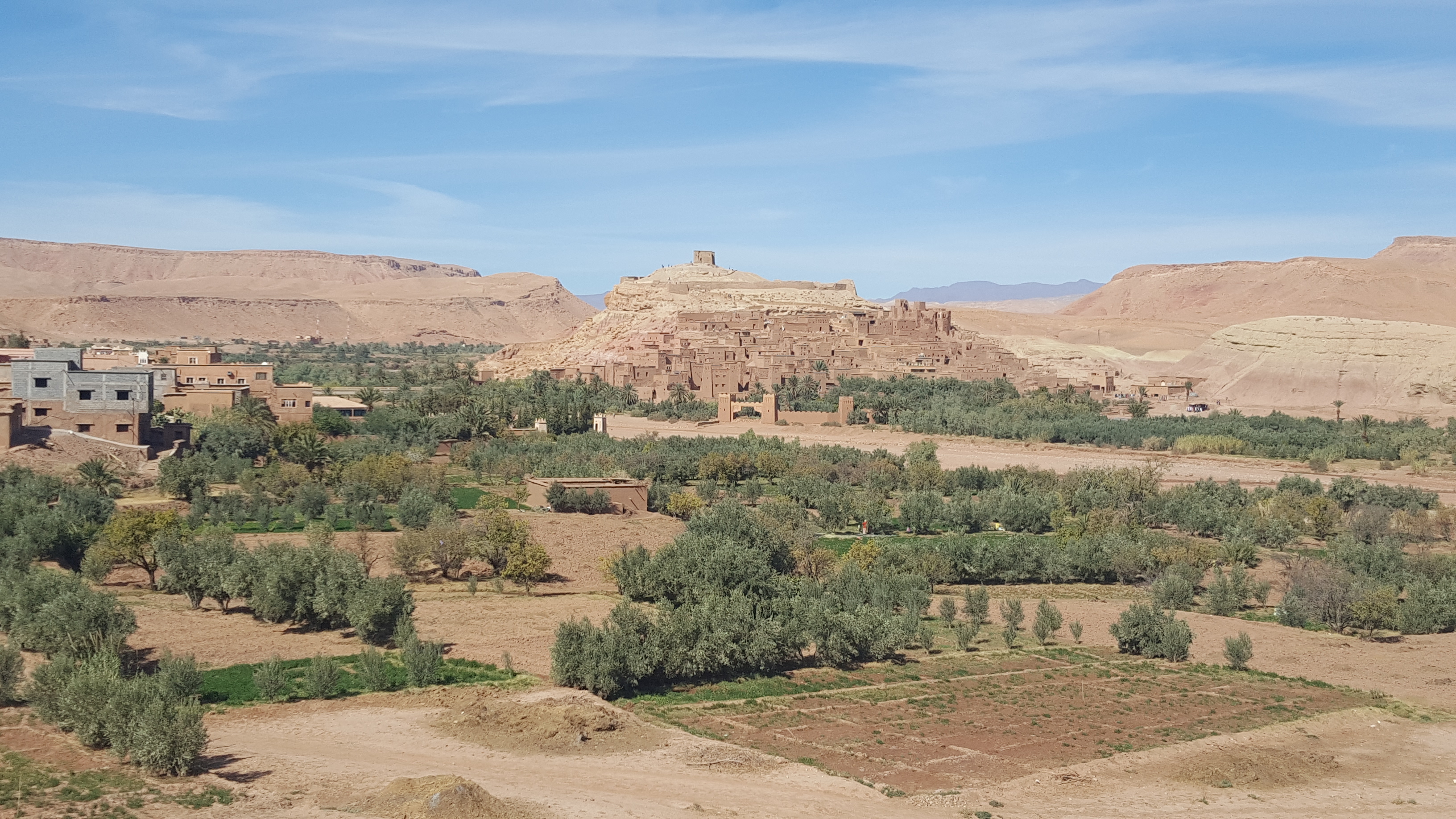
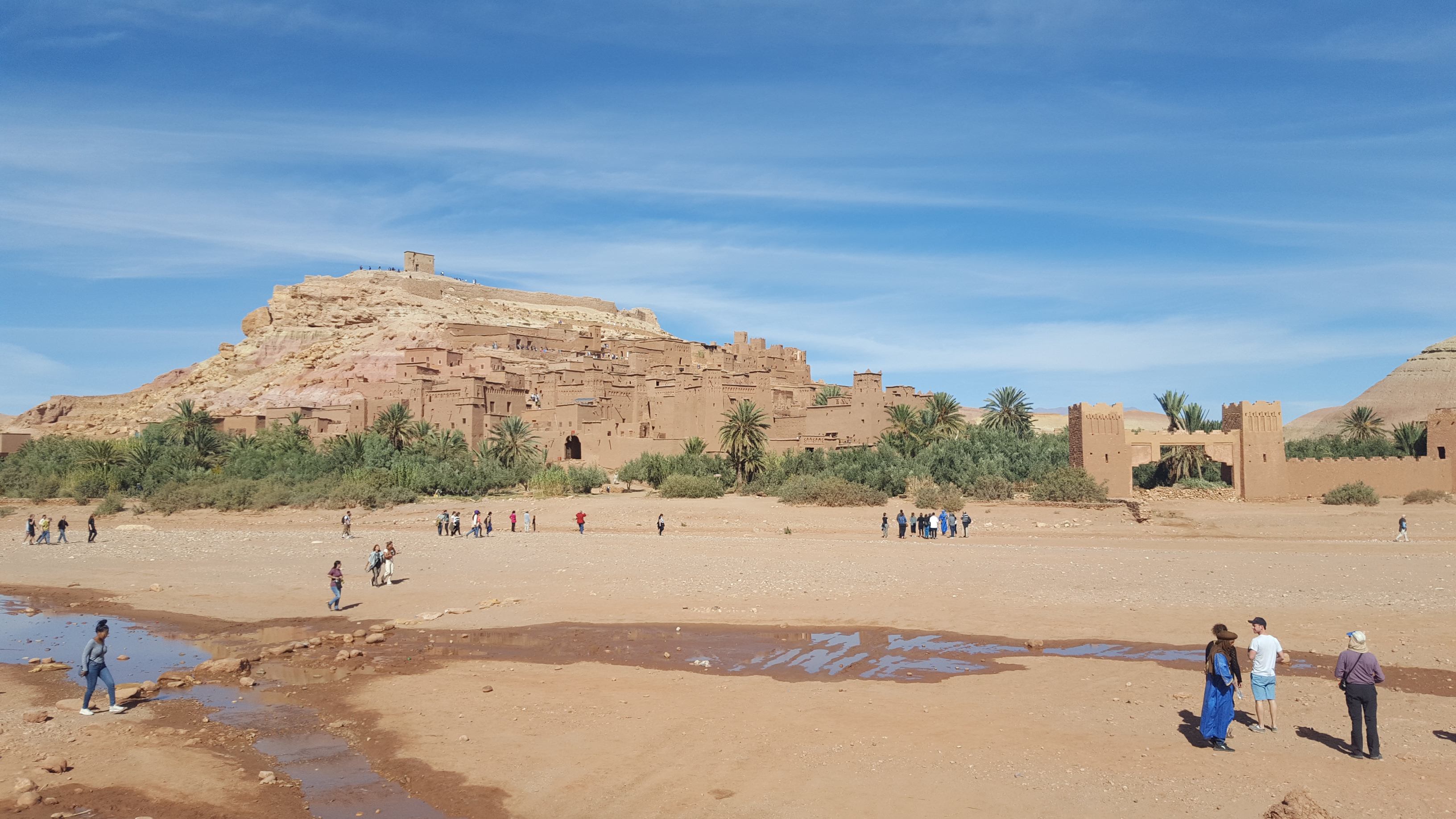
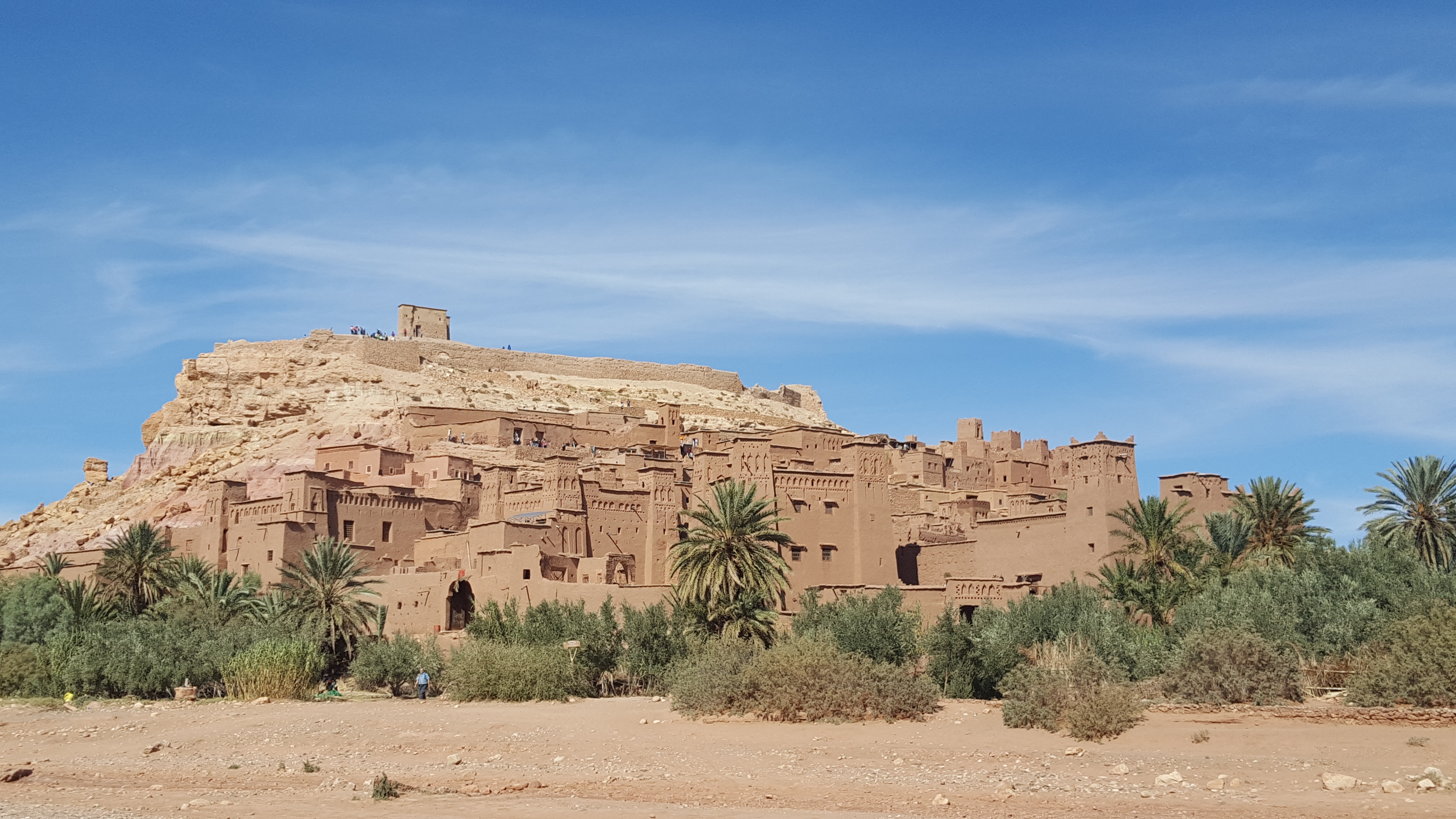
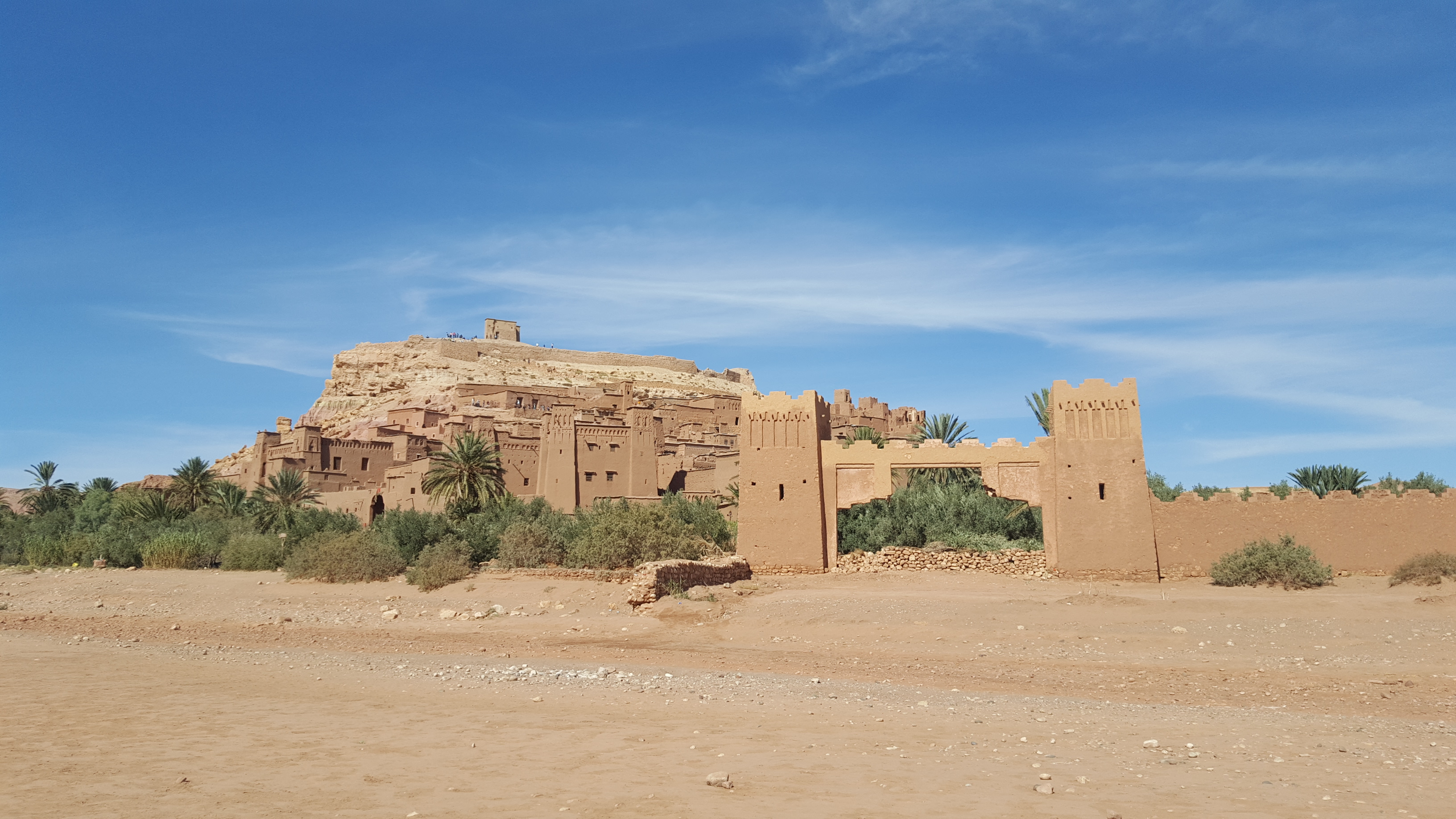
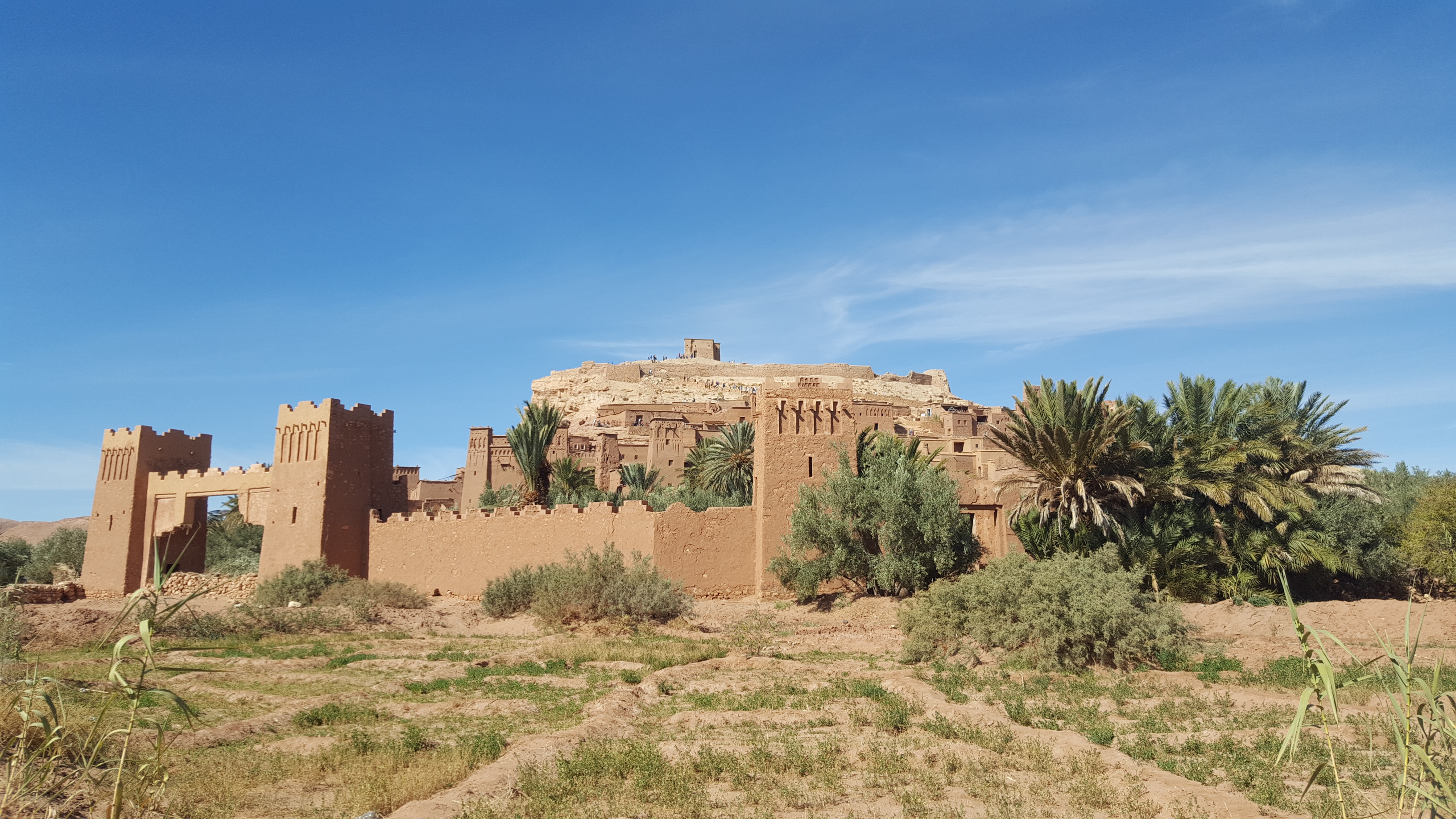
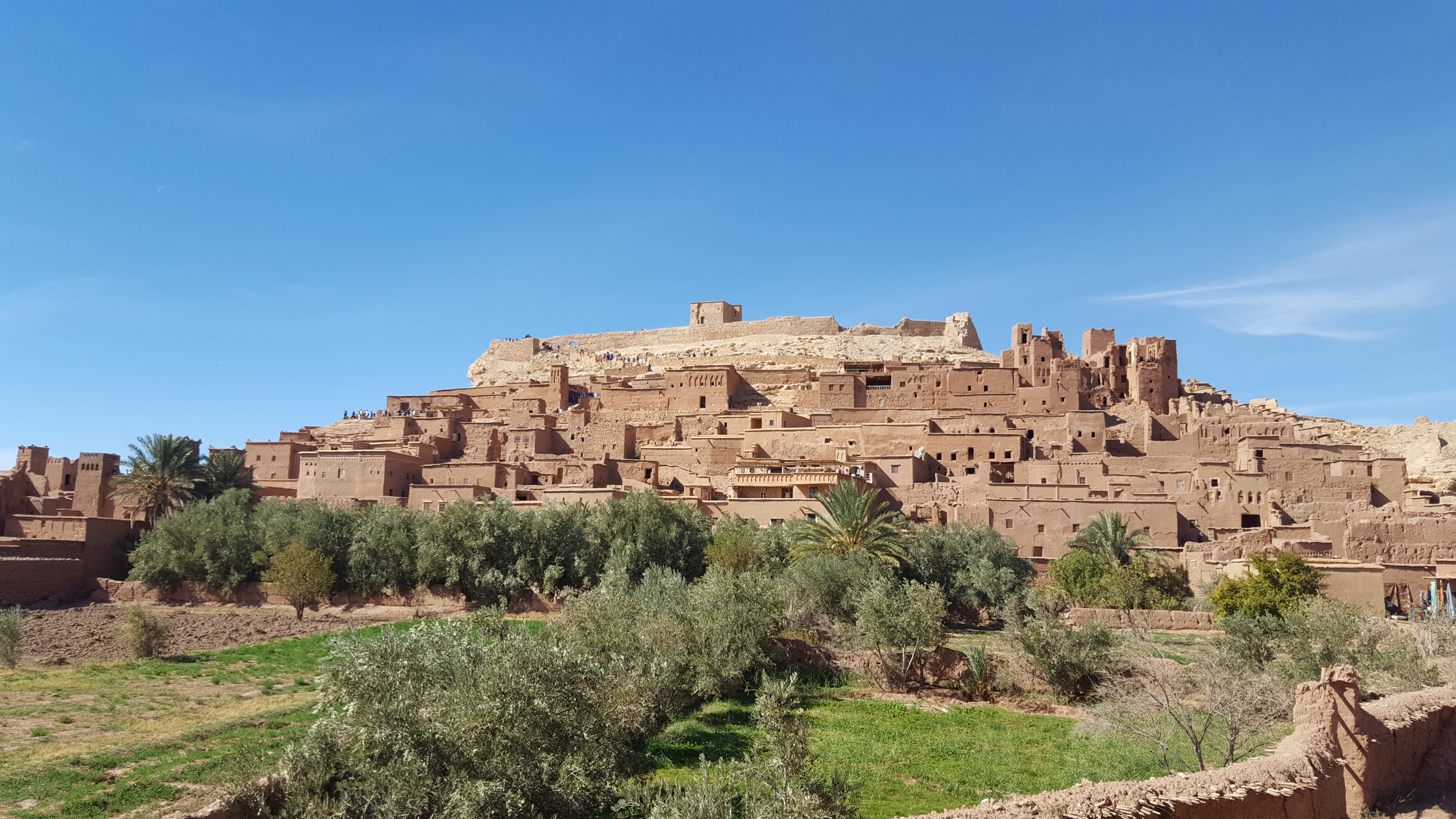
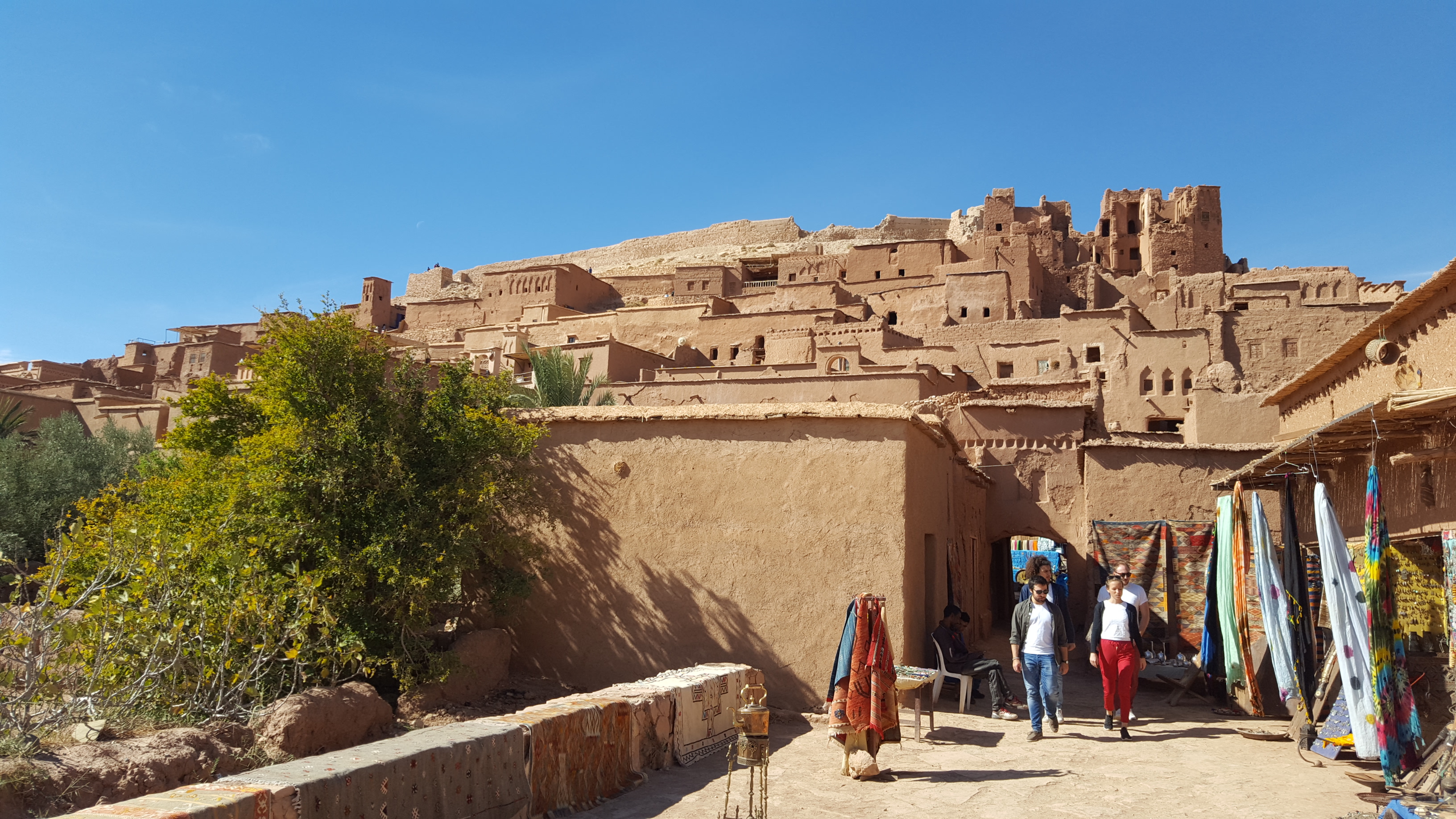


Its summit is equally impressive. Centred by an old building, the top is completely open with panoramas of the entire area around you. There are locals playing music and tourists shouting above one another as groups split up in wonder of the views before them.


Aït Benhaddou is truly one-of-a-kind. Nowhere else will you find such beauty and grandeur in the middle of the desert. It’s the place where dreams are held and stories are made and we feel lucky to have been a part of it.

